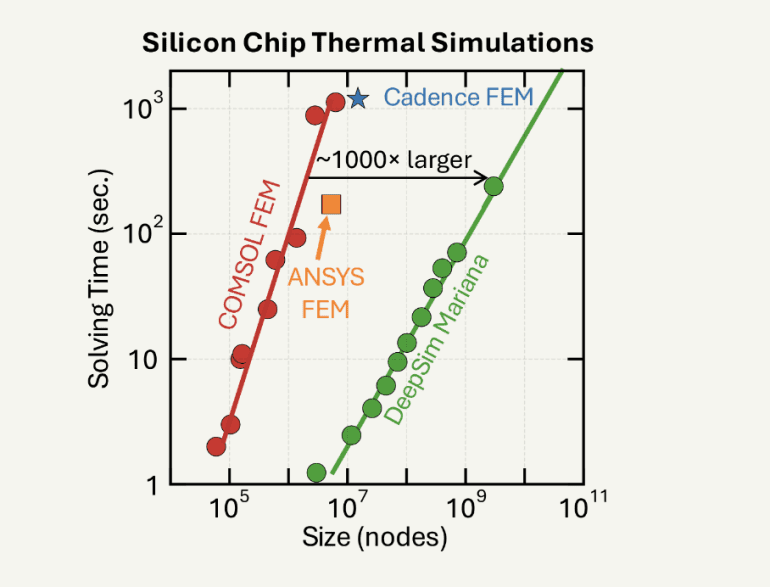- Advanced computational physics simulations are crucial for solving complex physical problems.
- Traditional 3D physics simulations are slow, expensive, and resource-intensive.
- Engineers must simplify simulations, often compromising accuracy.
- DeepSim offers an AI-driven platform for 1000X faster simulations without losing precision.
- DeepSim eliminates the limitations of traditional FEM tools and other AI physics simulations.
- The platform enables detailed thermal simulations for circuit design, significantly outperforming commercial tools.
- DeepSim can model complex geometries with unprecedented detail and speed, even to individual transistors.
Main AI News:
Tapping into the potential of cutting-edge computational physics simulations unlocks the ability to solve mathematical models that define complex physical events. When dealing with intricate geometries, fluid dynamics, or large-scale systems, the computational load is immense, but the value of the insights is unparalleled. Historically, 3D physics simulations have been time-consuming and expensive, requiring extensive resources. Engineers spend significant time meshing before even starting a single simulation, which can often take hours or weeks on costly computing systems. Due to their complexity, many simulations must be simplified, leading to reduced accuracy. Additionally, simulators are prone to crashes, necessitating constant oversight.
DeepSim introduces a transformative AI-driven simulation platform that dramatically accelerates the physics setup, allowing for design simulations at a pace 1000 times faster without losing precision. This innovation is powered by a combination of a GPU-accelerated solver and highly adaptable AI models. With DeepSim, the cumbersome traditional finite element method (FEM) tools are obsolete, and the rigidity of other AI-based physics simulations is overcome.
The DeepSim team, in collaboration with top semiconductor companies, has developed the most advanced thermal simulator for circuit design to date. This simulator can perform thermal simulations with billions of nodes in just minutes on a single GPU, offering a thousandfold improvement in detail compared to commercial tools that rely on over fifty CPU cores.
DeepSim’s simulator can handle incredibly complex geometries with length scales spanning six orders of magnitude, a feat impossible with FEM tools. In a 10-minute thermal simulation of an integrated circuit, including essential components like heat sinks and airflow, DeepSim showcases its capability. Within a complete chip measuring 1 cm, the platform can pinpoint hot spots down to individual transistors (~10 nm in size).
Conclusion:
DeepSim represents a significant breakthrough in the simulation market, offering unprecedented speed and accuracy. Its ability to outpace traditional tools by such a large margin while maintaining precision positions it as a disruptive force, especially in industries like semiconductor design, where detailed simulations are critical. The platform’s capabilities may lead to faster innovation cycles, reduced costs, and a competitive edge for companies adopting this technology. As DeepSim continues to evolve, it could redefine industry standards, making AI-driven simulations the new norm across various sectors.

